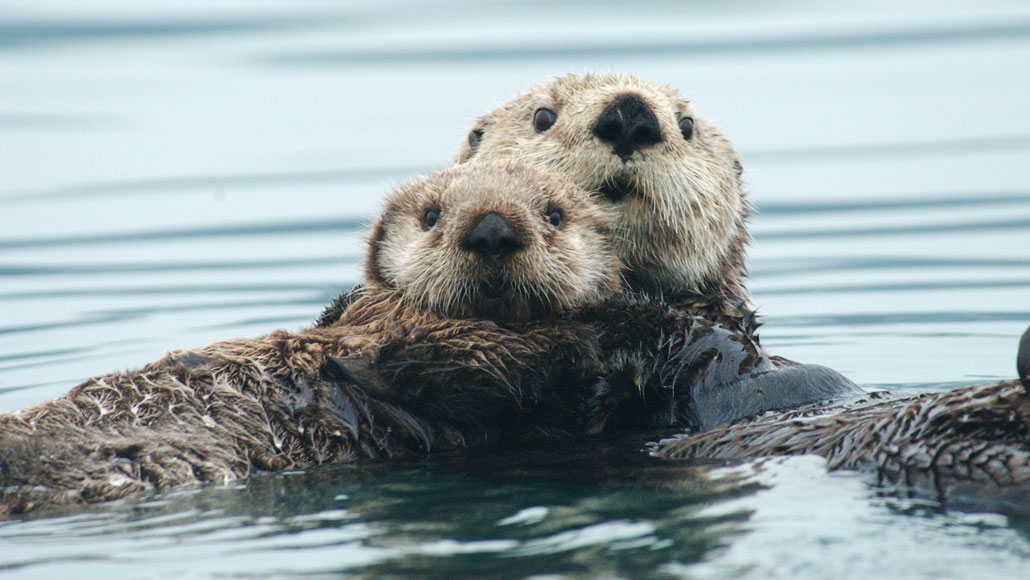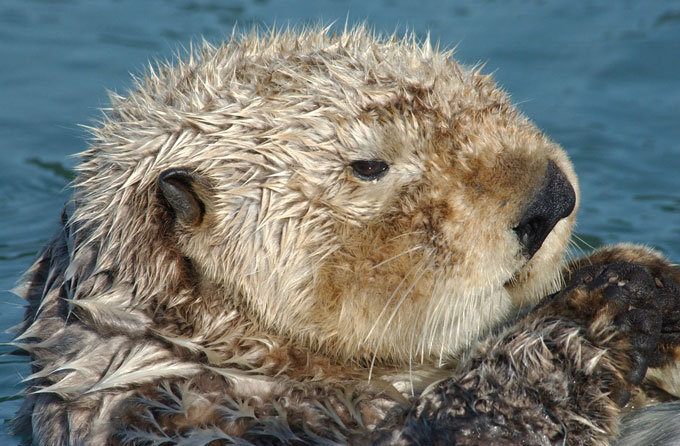Here’s how sea otters stay warm without blubber or a large body
The smallest mammal in the ocean keeps toasty with leaky mitochondria

Scientists already knew that sea otters’ extreme metabolism helps keep them warm in cold sea water. A new study shows how that process begins at the cellular level.
Randall Davis (Image obtained under USFWS Marine Mammal Permit No. MA-043219 to R. Davis)
A sea otter’s secret to staying warm isn’t in thick stores of blubber. It’s in its muscles.
Otters burn calories at a rate three times as fast as predicted for a creature their size. The rate at which their bodies use energy (calories) is set by their metabolism. That’s the rate at which their cells and tissues work. Leaks in the energy-generating parts of their muscle cells help explain what’s going on. Researchers shared this new discovery July 9 in Science.
The finding shows how otters meet the challenge of staying warm at sea. And it could apply to other marine mammals, too.
In fact, says Terrie Williams, “This could be a game changer in terms of how we think about the evolution of all marine mammals.” Williams works at the University of California, Santa Cruz. Although she studies how the environment affects organisms’ bodies, she did not take part in the research reported here.
To dwell in cold oceans, mammals must have developed ways to regulate their body temperature amidst the chill. “To me’” Williams says of the new finding, “this is probably one of the clearest pieces of evidence saying, ‘Here’s how they did it.’”
Marine mammals such as seals and sea lions often have a high metabolism to cope with cold water. But these creatures also rely on large bodies and blubber to stay toasty. Sea otters, in contrast, are the smallest mammals in the ocean. Lean and compact, they bob in the sea like furry barrels on waves. They have the densest fur coat on the planet. But this super-insulating fur can’t fully prevent them from losing too much heat. That’s because water transfers heat more than 22 times as well as air does. And small bodies have more surface area compared to their mass. That means they lose heat faster, even when covered in fluff.
“Being a small-bodied marine mammal in cold waters presents a real thermal challenge,” says Traver Wright. One of the new study’s authors, he is a comparative physiologist. He works at Texas A&M University in College Station.
Staying warm
Scientists already knew sea otters have an extreme metabolism. It helps them maintain a body temperature that is, on average, 37° Celsius (98.6° Fahrenheit). Metabolism describes the chemical processes within cells that support life. That includes how food gets converted to energy. Otters burn through food three times as fast as one might expect in a mammal their size. They have to eat one-fourth of their body weight in food every day. But researchers didn’t understand their “revved-up metabolism for heat generation,” Wright says — at least not on the level of the cells.
Skeletal muscle makes up as much as half of most mammals’ body weight. So it affects their body’s whole metabolism. Wright’s group searched for the heat source in otters’ muscles. The researchers sampled muscle from 21 captive and wild sea otters. Some were babies; others adults. Then the researchers measured how much oxygen their muscle cells used as they performed different tasks.
Oxygen use is one gauge of how much heat cells are producing. The researchers compared that rate of oxygen use in otters to what’s seen in other animals. They looked at humans, elephant seals and even Iditarod sled dogs. (The Iditarod is a very long dog race in Alaska.)

Mitochondria (My-toh-KON-dree-uh) are the energy-generating structures in cells. Leaks in them produce extra heat. And that explains the sea otters’ extreme metabolism, the researchers report. These structures pump protons across their inner membrane to store energy that can be used to power the host cell. But if the protons leak back over the membrane before they can be used for work, that energy is lost as heat.
Otters then need to eat more food to replace the lost energy. This revs up their metabolism.
Still much to learn
Other mammals also can generate heat this way. But sea otters are much better at it than most. Those energy leaks account for about four-tenths of the total oxygen use in an otter’s muscle cells. That is higher than is known for any other mammal except for extremely tiny mice. Producing heat through leaky mitochondria helps otters stay comfortable in 0 °C (32 °F) Pacific Ocean waters. “That message [about what’s going on] is loud and clear, and just brilliant,” Williams says.
Sea otters’ high leak rate is likely not high all the time, Wright says. But otters’ cells can probably turn up their leakiness when they need to generate more warmth. Scientists don’t yet know how otters’ cells turn this process up and down.
Baby otters don’t yet have enough muscle mass for these leaks to warm their whole bodies. But their muscle cells do generate heat at adult rates. That shows this energy-leak strategy begins early. The team also found similar energy leakiness in wild and captive otters. That suggests these leaks are a “driving force” behind the otters’ metabolism, Wright says.
It’s not yet clear if otters inherit this trait, Wright says, “or if this is something that quickly comes on after birth.”
Finding the cellular source of sea otters’ souped-up metabolism could help scientists understand how other marine mammals cope with ice-cold water. And it could help them better understand how their ancestors first evolved to live and thrive in the seas.







